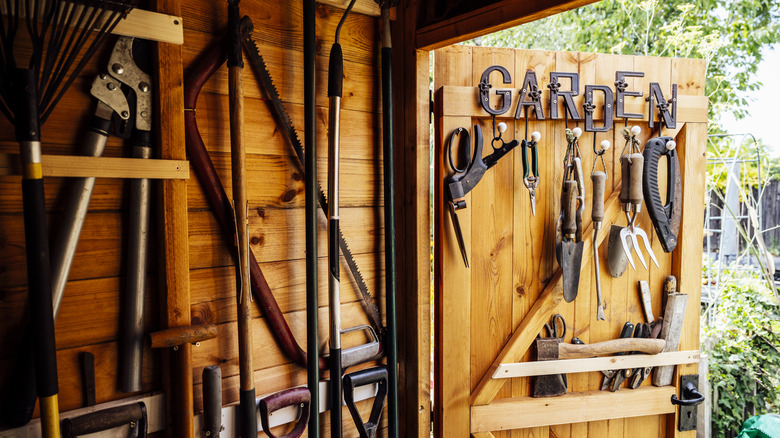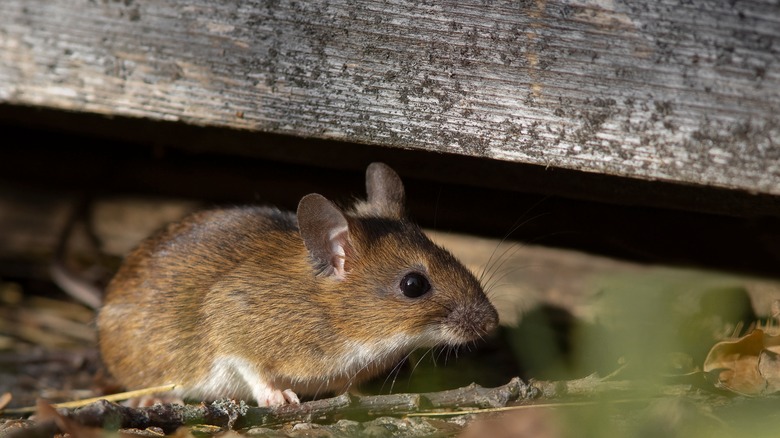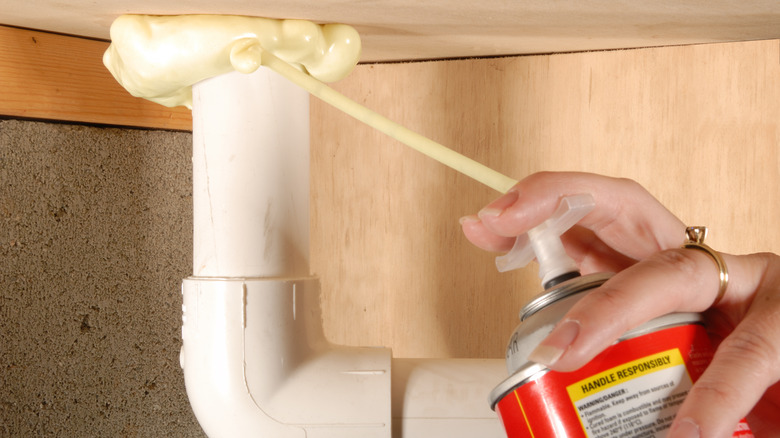What To Do If You Keep Seeing Mice (Or Their Droppings) In Your Shed
Depending on where you live, you might go weeks or even months without stepping foot in your shed. Once cold weather sets in and you've stored gardening tools, birdseed, and lawn care equipment for the winter, you lock it up and all but forget it exists. But what happens when you return, only to discover that some unwelcome visitors have been calling it home? If you see mice or their droppings in your shed, it's time to remove food sources, seal cracks, and take preventive measures to keep them out for good.
While mice make cute characters in children's books, their presence is far from ideal in your shed. Not only can mice spread diseases like leptospirosis and hantavirus, but they can also be extremely destructive. Whether you use your shed to store holiday decorations, animal feed, birdseed or pet food, you could face some frustrating damage from mice. They chew through cardboard and plastic bags to get to anything resembling food. Whether you've identified mouse droppings or actuallly seen the rodents in your shed, it's time to take humane measures to get them out and prevent their return.
Removing mice from your shed
Mice are only calling your shed home because it offers a way in, a place to nest, and a food source. Especially since having mice in your shed poses much less of a health or property risk than having them in your home, there's no need to go for the mouse traps. Mouse traps can pose their own risks to pets and children, and there are plenty of other ways to get rid of mice humanely.
Start by removing or firmly sealing any possible food source that mice could be munching on. Cardboard or flimsy plastic containers won't keep mice out, since they can chew through cardboard and bags. Invest in metal or sturdy plastic containers with lids that truly seal, and transfer all edible matter into those. Move as many items out of your shed as you can in order to give it a thorough clean. It's likely that you'll scare the mice away or clean up what's left of their nest.
If you continue to notice new droppings or mice after you've stored food and given the shed a good cleaning, you can try setting a humane trap, which you can purchase from Walmart for around $10. These types of traps are reusable and simply require you to add bait such as peanut butter to lure a mouse in. Once a mouse is caught in the trap, it's best to drive it a few miles away before releasing, preferably in an open space away from homes.
Preventing and repelling mice
Once you've removed the mice from your shed, it's time to make sure they stay out. Start by sealing any gaps and cracks that a mouse could possibly enter through. These animals are tiny, so even the smallest gap between doors, windows, or piping could pose a problem. Give the shed a careful once-over and seal off any openings with boards, caulk, or foam.
If your shed does not have its own flooring, adding steel hardware cloth to the bottom can work wonders. It also helps to dig a trench and extend your shed's walls into the ground by a few inches with hardware cloth. This helps prevent mice from digging under the walls and into your shed. You can find a 10-foot by three-foot roll of hardware cloth at Home Depot for around $20.
Finally, take advantage of the fact that mice have very strong, sensitive noses. You can repel mice by planting herbs like mint and lemongrass in your yard or in buckets near your shed. Sprinkling cinnamon, cayenne, apple cider vinegar, or peppermint oil should also deter mice from returning, since these scents are unpleasant for them. Keep in mind that peppermint oil is not conclusively proven to repel rodents and is also toxic to pets if ingested. If you've tried all of the above strategies and still see mice or their droppings, it's time to call in professional help.



